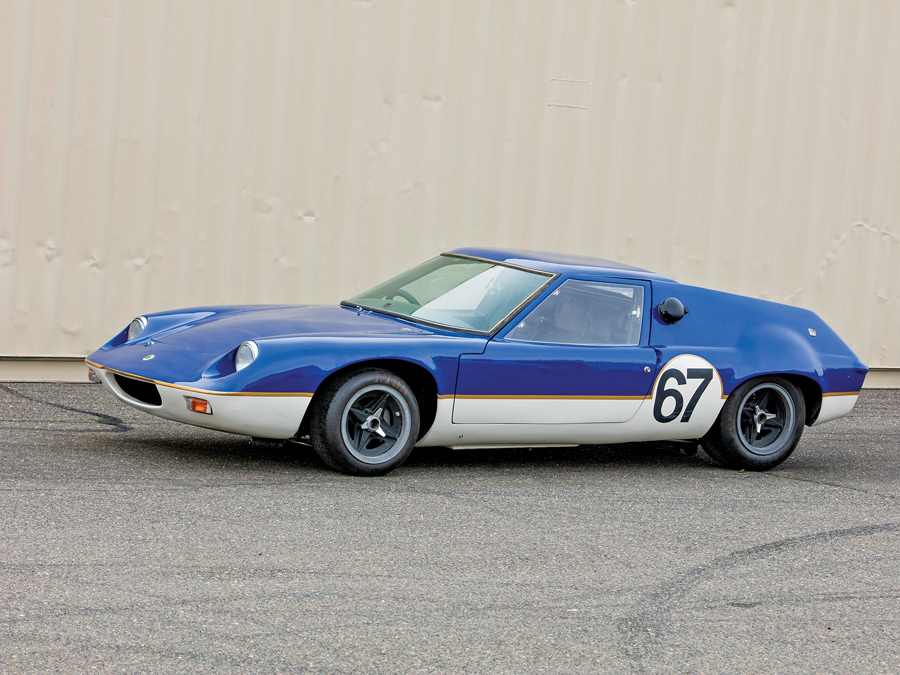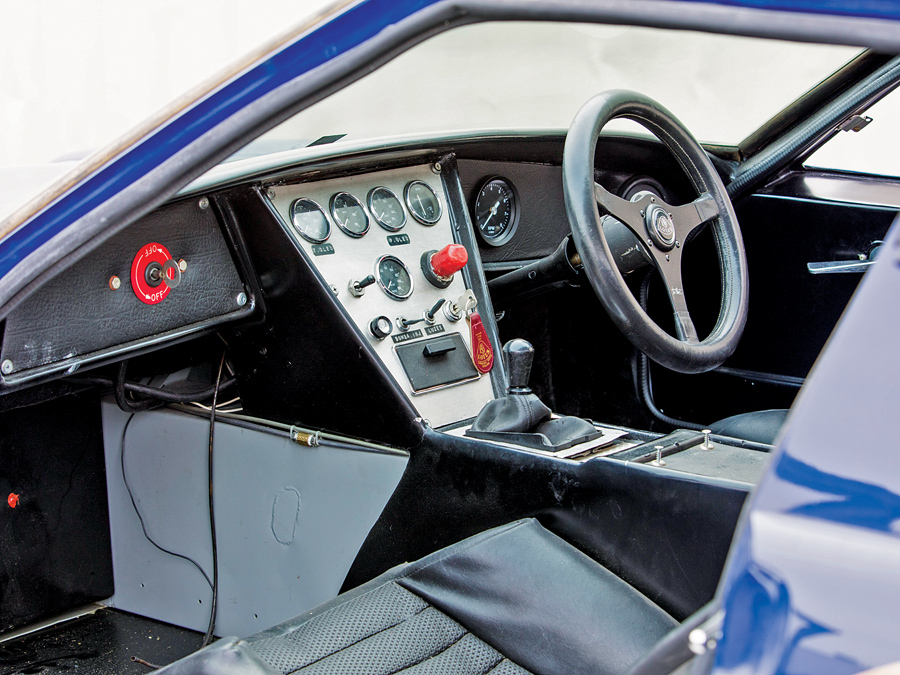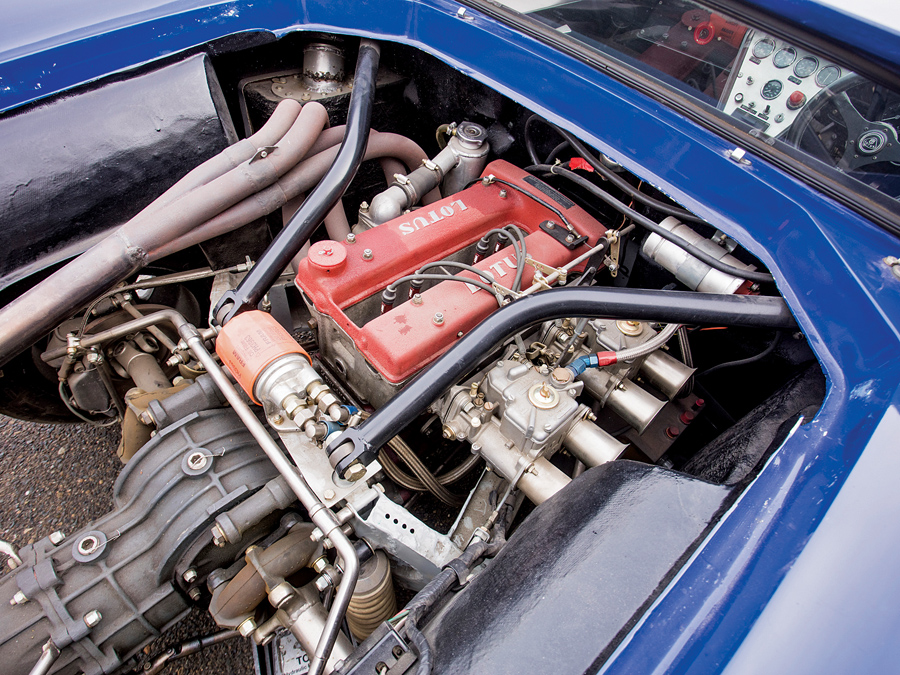SCM Analysis
Detailing
| Vehicle: | 1967 Lotus 47 GT-015 Group 4 Coupe |
| Years Produced: | 1966–67 |
| Number Produced: | 68 |
| Original List Price: | N/A |
| SCM Valuation: | $112,000 (this car) |
| Chassis Number Location: | Tag on driver’s side door jamb |
| Engine Number Location: | On block by distributor |
| Club Info: | Lotus Europa 47 Registry |
| Website: | http://lotus-europa.com/rega47.html |
| Alternatives: | 1968 Chevron B8, 1966 Porsche 906, 1963–65 Lotus 26R |
| Investment Grade: | A |
This car, Lot 134, sold for $112,000, including buyer’s premium, at Bonhams’ Amelia Island, FL, sale on March 8, 2018.
Last month, I wrote about a gorgeous Lotus Eleven that sold for a fraction of what might have been expected, and the essence of my discussion was trying to understand why.
Our topic today is a very similar situation regarding a somewhat newer racing Lotus — but with different answers.
In today’s market, Lotus 47s seem to have a two-tier value structure. Most of them are valued as excellent weapons-grade racers and sell in the $150,000–$160,000 range. However, there are a few very successful — thus collectible — ones that tend to sell in the $200,000 range (mostly to Japan, for whatever reason). Our subject car sold for a considerable discount from those values, and once again the issue is why.
A fast history
Let’s start by talking about the car itself. By the early 1960s, Lotus had become a successful enterprise with a factory (Lotus Cars) to build production cars and a competition division (Lotus Components) to build racers.
The factory was fully occupied building the road-oriented Lotus Elite coupe and the wind-in-your-face, club-racing Lotus Seven, while the racing side was doing well campaigning and selling Formula One and Formula Junior racers along with a few tube-frame sports racers.
1962 proved to be a watershed year for Lotus, as Colin Chapman’s relentless innovation produced the Lotus 25, the first monocoque-construction Formula One car ever built. It changed the Formula One world overnight — and Lotus as well. After the 25, Lotus would never build another tube-framed car for race or street.
On the production-car side, it was time to replace the Elite, so Chapman devised the Type 26 Elan, which utilized the monocoque concept with a twist.
The “frame” was a rigid-but-light steel box “backbone” down the center of the car, with ears that projected out front and rear to carry the engine and suspension mounts. A stiff fiberglass body shell was bolted on to complete the structure. The Elan was a revelation in sports car design, combining very light weight with an extremely strong chassis and supple suspension to provide an amazing level of performance and comfort. It was described as being a “Formula car for the street.”
The tube-framed Lotus Seven remained in production and sold well, particularly to club racers (it was truly awful on the street), but it was clearly time for something more modern.
In 1965, the Type 46 Europa was introduced to replace it. The market concept was similar to the Seven’s: very light, small and relatively cheap, oriented as much toward club racing as street use, but now as a sleek coupe rather than a spartan open car.
The Europa had the same boxed-steel backbone concept as the Elan, but it was modified to allow for the mid-engine configuration and rigidly bonded the fiberglass bodywork to the chassis for maximum stiffness with minimal weight. The powertrain was taken directly from the FWD Renault 16 but spun 180 degrees to make it fit in back, with the engine suitably modified for higher performance.
Enter the Type 47 GT
Almost simultaneously with the Europa, Lotus introduced the Type 47 GT, which looks similar, but that’s about all the two cars share.
To start with, the racing division — Lotus Components — and not the factory built the car. The backbone chassis used lighter-gauge steel, the fiberglass body was thinner with room for bigger tires, the fully adjustable rose-jointed suspension was lifted off the Lotus 41 Formula car, and the drivetrain now incorporated a 165-hp Twin-Cam Ford engine and Hewland FT 200 transaxle.
The magnesium racing wheels were wider, and the disc brakes were bigger. At 1,200 pounds, the Type 47 GT was 200 pounds lighter than a stock Europa. The Type 47 GT was, in fact, a completely different car than the Type 46.
It was really a pure, purpose-built sports racing car posing as a GT.
You can race it or look at it
The problem with purpose-built racing cars built after 1962 is that there is really nothing you can do with them except go racing — or put them in a collection to be admired.
They are simply too low and high-strung for casual use; you either race them or put them on a pedestal.
This creates a conflict because if you want to maximize collector value, the car needs to be as original and untouched as possible. However, if you want to race one safely and competitively, there is a lot of work to be done.
The Lotus 47 is particularly difficult in this regard because it was designed to last a season or two, while the bonded body and chassis structure makes refurbishment beyond suspension and drivetrain work extremely difficult and expensive. A used-up Lotus 47 is a scary proposition if you intend to race it.
Our subject car looks like it is the poster child for this conundrum. It is clearly a real car with extensive history, but neither it nor anyone who drove it were particularly successful or famous, so its collector value is minimal.
On the other hand, it is known to have been “used hard and put up wet” for at least seven seasons, so we have to assume that the core structures are a long way from new.
The reported restoration was apparently limited to crack-checking the suspension, installing a correct twin-cam engine, and painting the car. A glance at the photographs shows that it has obviously not been raced in at least 10 years and probably since 1975. No tech inspector would ever pass the seat belts or the condition of the engine bay for modern competition.
Display car or racer?
In view of the car’s history and condition, how should the market value it? There are two approaches: as a static display or as an active racer.
The car certainly has real value as part of a collection, as the Lotus 47 is a handsome, impressive and historically significant automobile that would fit well into a British racing theme. However, this car is not very special, and its livery (paint job) is not iconic for the marque, so it is a minor collectible at best and probably worth roughly the winning bid.
I am told that Lotus 47s are great fun to race, and they are widely acceptable and competitive at events worldwide, but this car is going to require at least $40,000–$50,000 in work before it can safely be put onto the track.
If you add that much onto the purchase price, you are sitting at pretty much the correct price for a good racing Lotus 47. Either way, the numbers make sense, and I believe that it was fairly purchased. ♦
(Introductory description courtesy of Bonhams.)


